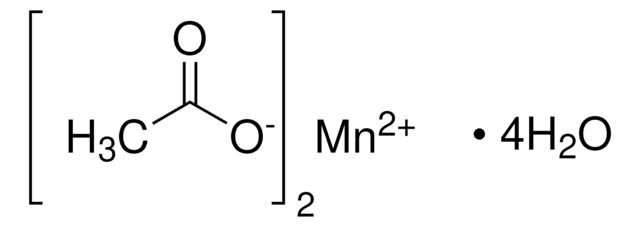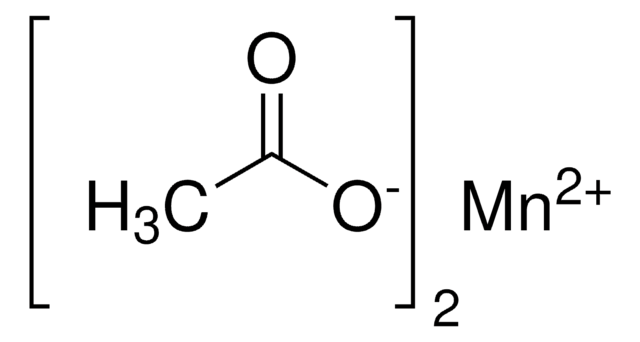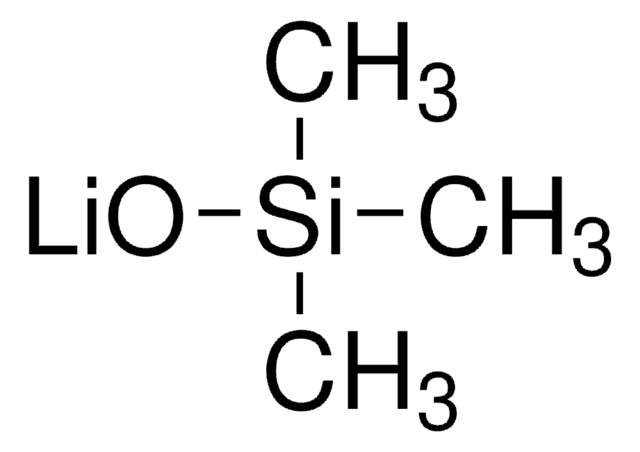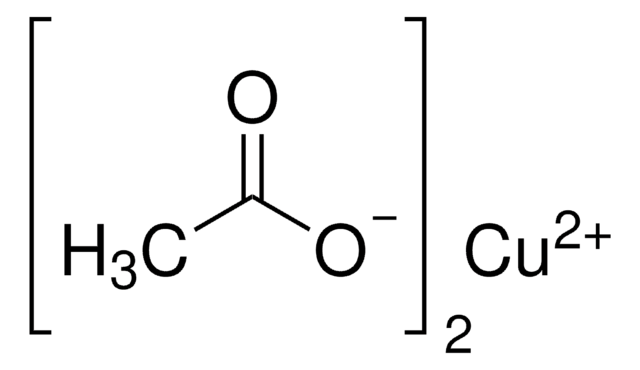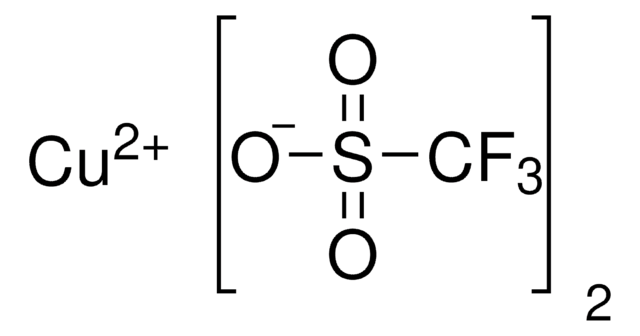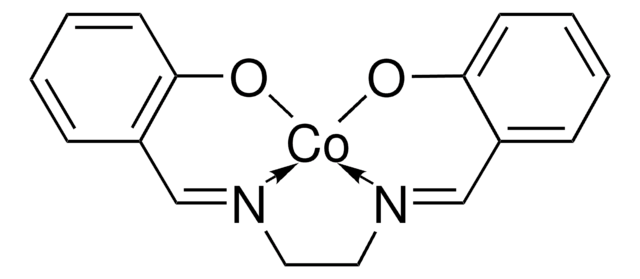399973
Cobalt(II) acetate
99.99% trace metals basis
Sinónimos:
Cobalt diacetate, Cobaltous acetate, Cobaltous diacetate
About This Item
Productos recomendados
Quality Level
assay
99.99% trace metals basis
form
crystals and lumps
solid
reaction suitability
core: cobalt
impurities
≤5% water
mp
298 °C (dec.) (lit.)
SMILES string
CC([O-])=O.[Co+2]
InChI
1S/2C2H4O2.Co/c2*1-2(3)4;/h2*1H3,(H,3,4);/q;;+2/p-2
InChI key
QAHREYKOYSIQPH-UHFFFAOYSA-L
¿Está buscando productos similares? Visita Guía de comparación de productos
Categorías relacionadas
General description
Application
- A precursor to synthesize cobalt titanium oxide catalysts for the oxygen evolution reaction.
- A starting material to prepare polymer stabilized Co nanocatalyst for growing carbon nanofibers.
- A catalyst for direct amination of azoles under mild reaction conditions
- A cobalt source in the synthesis of Lithium cobalt oxide (LiCoO2), which is a used as a cathode material in lithium-ion batteries.
- A precursor to synthesize cobalt oxide nanoparticles via a simple direct thermal pyrolysis process. Co3O4 nanoparticles further used as a high-capacity anode materials in lithium-ion batteries.
- An additive in the perovskite precursor solution to control the crystal growth and improve the performance of fully screen-printable hole-transport material (HTM)-free mesoporous perovskite solar cells (PSCs).
signalword
Danger
Hazard Classifications
Acute Tox. 4 Oral - Aquatic Acute 1 - Aquatic Chronic 1 - Carc. 1B Inhalation - Eye Irrit. 2 - Muta. 2 - Repr. 1B - Resp. Sens. 1 - Skin Sens. 1
Storage Class
6.1D - Non-combustible acute toxic Cat.3 / toxic hazardous materials or hazardous materials causing chronic effects
wgk_germany
WGK 3
ppe
Eyeshields, Faceshields, Gloves, type P3 (EN 143) respirator cartridges
Elija entre una de las versiones más recientes:
¿Ya tiene este producto?
Encuentre la documentación para los productos que ha comprado recientemente en la Biblioteca de documentos.
Los clientes también vieron
Artículos
Magnetism and magnetic materials have been of scientific interest for over 1,000 years. More recently, fundamental investigations have focused on exploring the various types of magnetic materials and understanding the magnetic effects created by electric currents.
Nanostructured Materials Through Ultrasonic Spray Pyrolysis
Advances in materials have often been led by the development of new synthetic methods that provide control over size, morphology and structure. The preparation of materials in a scalable and continuous manner is critical when development moves beyond lab-scale quantities.
Nanomaterials are considered a route to the innovations required for large-scale implementation of renewable energy technologies in society to make our life sustainable.
Nuestro equipo de científicos tiene experiencia en todas las áreas de investigación: Ciencias de la vida, Ciencia de los materiales, Síntesis química, Cromatografía, Analítica y muchas otras.
Póngase en contacto con el Servicio técnico